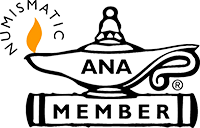1957 Penny Value: A Guide for Bullion Investors
By Bullion Standard ·
5 min read

A man in a black suit pointing at chart bars of gold coins on a white table, representing finance and business.
Discover the Intrigue of the 1957 Penny: Historical Significance and Investment Insight
Coin collecting is an intriguing realm for both hobbyists and investors, uncovering insights into history and offering potential financial gain. Among the collection of coins of interest stands the 1957 Lincoln penny, an emblematic piece of American numismatics. This article explores the historical significance of the 1957 penny's value and how its valuation plays a role in diversified investment strategies.
The 1957 Lincoln penny is notable in numismatic circles due to its production period at a time post-World War II when coinage was both widespread and evolving. Understanding the investment trends of such coins provides investors with a fuller picture of diversified investment avenues, complementing traditional bullion investments and offering a unique hedge against standard market fluctuations.
Key Factors Influencing the Value of a 1957 Penny
- Condition and Grading:
The condition of a coin is pivotal in determining its market worth. Grading categories, ranging from 'Good' to 'Mint State,' describe the physical condition. A 'Good' condition penny shows significant wear but retains major design elements, while 'Mint State' coins have never been in circulation and exhibit no significant wear, commanding much higher market prices.
- Mint Marks:
Mint marks, small letters found on coins, indicate where a coin was produced and are crucial for valuation. The 1957 Lincoln penny was minted in Denver and Philadelphia, marked by "D" or lacking a mint mark, respectively. Typically, coins with a "D" are more common, often decreasing their value compared to their mint-mark-less counterparts.
- Rarity and Errors:
Certain rare varieties and errors can dramatically impact a coin's desirability and value. Coins with unique die errors, double dies, or misprints, found mainly due to production anomalies, garner premium valuations. Collectors highly seek these variants, adding a speculative and potentially lucrative layer to numismatic investments. For broader insight into collectibles as alternative investments, exploring different ways to profit from such investments can be enlightening.
- Market Demand:
Like any commodity or collectible, the 1957 penny's value fluctuates with market demand. Enthusiast communities and dedicated collectors often drive this demand. Interest levels can spur price spikes for coins in certain conditions or with unique characteristics, such as recognized grading or provenance.
Examples of Valuation in Different Conditions
Understanding the potential financial returns from a 1957 penny involves considering its condition and market context:
- Good Condition:
A 1957 Lincoln penny in good condition is a staple for many collectors, often valued modestly, typically around a few cents over face value, due to its abundant production and circulation.
- Uncirculated Condition:
For investors seeking premium coin values, uncirculated 1957 pennies stand out. These coins, untouched by circulation wear, can fetch several dollars, and in pristine "Mint State" condition, the value can significantly increase, sometimes reaching upwards of $10 to $20 based on collector interest and market conditions.
- Error Varieties:
Collectors highly prize error varieties or unique attribute pennies. Examples like a double-die obverse can propel a coin's value into the hundreds of dollars, showcasing the allure of rarity and uniqueness in numismatic markets.

Uncovering the Investment Wisdom: Why the 1957 Penny Matters in Your Portfolio
Incorporating the 1957 Lincoln penny into broader investment portfolios not only diversifies but also enriches them with historical value. Unlike standard bullion, numismatic coins like the 1957 penny present unique historical narratives, serving as both a hedge and an artifact of Americana—particularly appealing during economic downturns when their non-correlation to the stock market shines.
For collectors and investors, venturing into coin collecting demands diligence and a keen eye for detail. As a marketplace grounded in history and speculative value, numismatics provides an engaging alternative to traditional investments, allowing for both passion and profit.
Frequently Asked Questions (FAQ)
Investment Potential of a 1957 Penny
The 1957 penny’s appeal as an investment lies in its historical significance and numismatic value compared to conventional assets. Unlike gold or silver, its value stems from collectibility, driven by factors such as rarity and condition rather than intrinsic material worth.
Historical Value Fluctuations
The value of 1957 pennies has historically exhibited relative stability, with occasional increases in highly specific error coins. During economic downturns, values typically fluctuate less than stock prices, owing to steady collector demand.
Risks in Numismatic Investing
Investing in coins can be riskier than bullion because it carries an element of speculation regarding future collector demand. Coins’ values can also be less liquid, and grading discrepancies can result in value disparities.
Impact of Market Factors
While largely insulated from metallic market trends, coins can still be affected by economic conditions in indirect ways, primarily through changes in collector disposable income.
Diversifying with Collectible Coins
Diversifying an investment portfolio with collectible coins like the 1957 penny includes focusing on acquiring pieces with historical significance and rarity, balancing broader financial market exposures with tangible, storied assets. This approach ensures a varied and robust asset base, offering potential financial stability and growth.
Enhance Your Collection and Portfolio
The 1957 Lincoln penny offers a captivating blend of history and investment potential that can enrich any portfolio with a touch of American heritage. By diversifying with unique and storied numismatic pieces, you gain both an intriguing hobby and a potential hedge against market volatility.
Ready to explore more in the world of precious metals and collectibles? Visit Bullion Standard for a wide range of investment options and expert advice tailored to your financial goals.





















